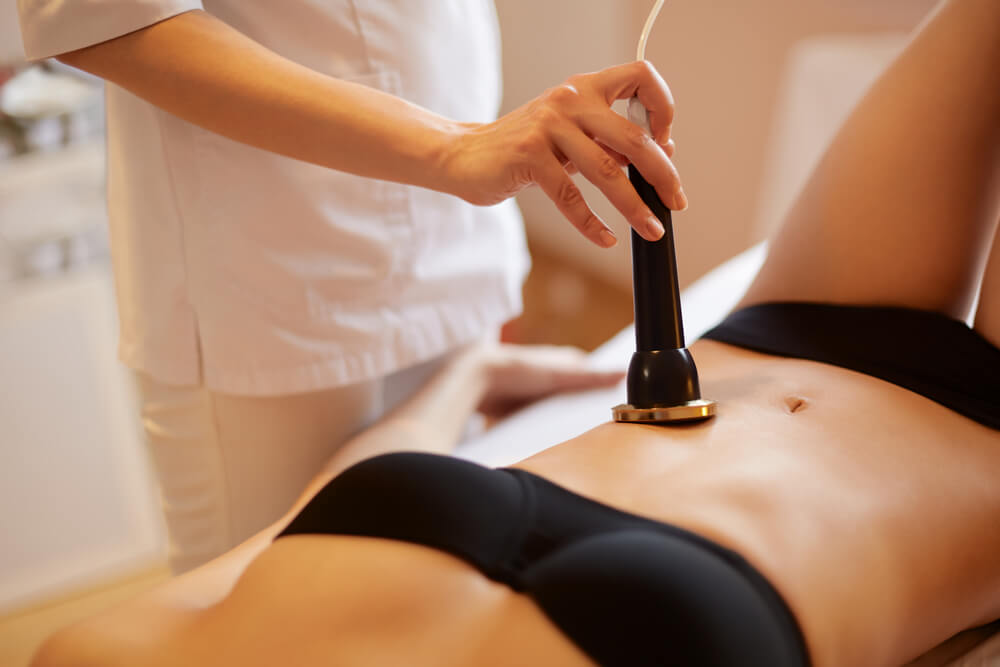Understanding Ultrasonic Cavitation: How it Works to Reshape Your Body
In the current beauty and wellness scenario, non-invasive body contouring treatments have gained much acceptance. People are looking for ways to sculpt away stubborn fat areas without surgery, needles, and downtime. This is where ultrasonic cavitation comes in, often called “non-surgical liposuction”. This innovative treatment is helping people reshape their bodies safely, effectively, and even from the comfort of their homes.
If you’ve ever wondered about how visible slimming results can be delivered from the handheld devices that are known as at home cavitation machines, this article is going to break it down for you on everything from how the technology works to safe and successful tips on its use.
What Is Ultrasonic Cavitation?
Ultrasonic cavitation is performed under non-invasive cosmetic treatment, which extends low-frequency sound waves to disintegrate fat cells under the skin. Cavitation, as opposed to liposuction, is non-cutting and non-invasive. Hence, it does not require anesthesia and has no recovery time.
The treatment is commonly used to target stubborn areas of fat that don’t respond to diet and exercise, such as:
- Abdomen and love handles
- Thighs and hips
- Upper arms
- Back and waist
- Double chin and jawline
All of which are very safe and FDA-approved for body contouring. As stated in a report published by Grand View Research, the global non-invasive fat reduction market is expected to attain a valuation of $4.5 billion by 2027. And treatments like ultrasonic cavitation are picking up momentum as one of the most preferred options among people who choose to avoid health hazards that are associated with surgery.
How Does Ultrasonic Cavitation Work?
Ultrasonic cavitation works via high-frequency ultrasound waves, usually ranging from 20 kHz to 40 kHz. These frequencies penetrate the skin and reach the fat cells lying beneath the surface. Here is a stepwise breakdown of what occurs:
- Ultrasound Waves Target Fat Cells: When you place the cavitation device against your skin, the sound waves create small vibrations within the fat tissue without harming nearby organs, muscles, or skin.
- Fat Cells Begin to Break Down: With rapid changes in pressure, microscopic bubbles are created within the fat cells. These bubbles continue to grow until they ultimately burst and lead to the collapse of the fat cell membrane, a procedure referred to as cavitation.
- Fat Gets Released and Eliminated Naturally: After being emulsified, the fat is broken down into liquid (mainly in the form of triglycerides) and is eliminated through the body’s lymphatic system over the next few days.
This process does not cause a significant reduction in overall weight. But it does help in the reshaping and toning of specific targeted areas to create the appearance of a slimmer, more contoured silhouette.
Key Benefits of Ultrasonic Cavitation
What makes this procedure so appealing is its wide range of benefits, particularly when compared to common fat reduction methods like liposuction or cryolipolysis.
The following are some of the most notable advantages:
- Non-invasive and Painless: No needles, no anesthesia, and no downtime — just sound waves doing the work.
- Safe for Most People: It is safe for all body types and skin types, with very little chance of adverse effects.
- Visible Results after Just a Few Sessions: Many people claim noticeable changes as few as 3-6 sessions.
- Increases Confidence: A more toned, sculpted figure can boost self-confidence and body image.
- Affordable: A single in-clinic session can cost $150-$300, but purchasing an at-home cavitation machine allows you to achieve equivalent results for a fraction of the price.
What to Expect: Realistic Results and Timelines
Ultrasonic cavitation is not a quick fix; it is a long procedure that complements a healthy lifestyle. Most people see visible effects after 4-8 sessions, spaced about a week apart. The number of sessions required varies depending on your body type, lifestyle, and the area being treated.
Here is a general outline of what you can expect:
- After 1-2 sessions, bloating and water retention have been slightly reduced.
- After 4-6 sessions, there is a noticeable inch decrease and improvement in skin firmness.
- After 8 or more sessions, there is a considerable decrease in fat and a more defined shape.
Maintaining a healthy diet, staying hydrated, and indulging in regular exercise are all strongly suggested for better results.
Using an At Home Cavitation Machine: A Step-by-Step Guide
One of the most fascinating developments in this area is the availability of at home cavitation machines. These small and accessible gadgets bring advanced technology into your living room — but to get the greatest (and safest) results, use them carefully.
Here are the basic step-by-step instructions:
1. Prep Your Skin.
Clean and dry the area you intend to treat. Applying a tiny layer of ultrasonic gel (which is commonly included with the device) allows the machine to glide more smoothly and increases sound transmission.
2. Select the Right Settings
Most gadgets have numerous intensity modes. Beginners should start on a lower frequency and slowly increase it as their skin adapts.
3. Use gentle circular motions.
Move the device carefully in circular or sweeping strokes across the treatment region. To prevent discomfort, avoid being in one place for an extended period.
4. Session duration.
A normal session lasts 15 to 30 minutes at each spot. Most experts suggest treating each area 1-3 times each week, with at least 48 hours in between sessions to allow the body to process and eliminate the released fat.
5. Post-Treatment Care
- Hydrate: Drink at least 1.5–2 liters of water after each session to help flush out fat through the lymphatic system.
- Light Activity: Gentle exercise, like walking or stretching, can enhance circulation and speed up fat removal.
- Avoid Alcohol & Fatty Foods: These can slow down the body’s detoxification process.
Safety Tips and Precautions
While ultrasonic cavitation is considered very safe, it is wise to follow the indicated guidelines to give yourself the best experience with your at-home cavitation machine:
- Seek medical advice if there are existing medical conditions, such as any problem with the liver, heart conditions, or metal implants.
- Do not use it on broken skin, varicose veins, or over the heart, chest, or head areas.
- Avoid use on a daily basis — Overtreatment can strain your lymphatic system and impair effectiveness.
- Be patient: The effects are cumulative and frequently subtle at first. Consistency is essential.
Common Myths About Ultrasonic Cavitation
Because cavitation is relatively new to the mainstream, several misconceptions still circulate. Let’s clear up a few:
1. “It’s a weight-loss solution.”
Cavitation is for body contouring, not significant weight loss. It reshapes and tones rather than drastically reducing body mass.
2. “It works instantly.”
While some notice changes quickly, full results take several weeks as your body eliminates the liquefied fat.
3. “At home devices don’t work.”
High-quality at home cavitation machines use the same core technology as clinic devices — consistency and correct usage are what matter most.
Final Thoughts: A Smarter Way to Shape Your Body.
Ultrasonic cavitation represents the future of non-invasive body contouring. It uses ultrasound waves to decrease stubborn fat and enhance your natural shape, providing a safe, effective, and convenient alternative to surgery, pain, and downtime.
Whether you opt for expert treatments or prefer the convenience of at home cavitation machines, the results speak for themselves. With regular use, proper care, and a healthy lifestyle, you can achieve smoother contours, increased confidence, and a body that feels more like you – all from the comfort of your own home.
Keep an eye for more latest news & updates on Gravity Internetnet!






